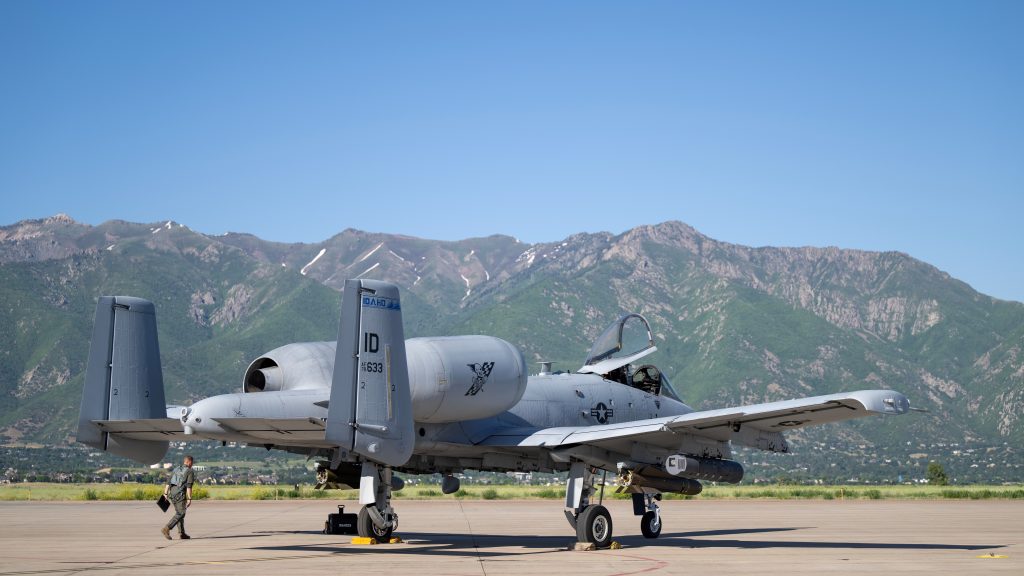124th FW Airmen participate in weapons system evaluation program exercise at Hill AFB

Airmen from the 124th Fighter Wing, Gowen Field, Boise, Idaho, participated in a weapons system evaluation program exercise at Hill Air Force Base, Utah, June 6-14, 2024.
The program is designed to test the employment of various live munitions and requires the efforts from various Air Force specialty codes, but focuses on the building, loading and employment of these munitions.
The use of lethal force is a serious burden and responsibility, requiring proficiency from everyone involved.
“This is a weapons training exercise,” said Staff Sgt. Alyssa Johnson, an aircraft armament systems technician with the 124th Aircraft Maintenance Squadron. “The focus is on how ammo builds munitions, how weapons loads them, and how the pilots drop them. The inspectors are making sure we are proficient at what we do.”
This is a unique and critical training event for Idaho Air Guardsmen.
“We don’t get a lot of opportunities like this in the Idaho Guard, because of where we’re stationed,” said Johnson. “Working with live munitions is critical for us.”
WSEP provides Airmen with challenges and opportunities.
“This has been a mini deployment,” said Tech. Sergeant Charles Updegraff, the senior munitions inspector for the 124th Munitions Flight. “We’ve worked long days and in a location with limited access to the equipment we normally have at home, challenging how we normally work.”
Updegraff went on to say that working through challenges prepares Airmen for real-world deployed scenarios, especially when looking at a near-peer fight. Allowing younger Airmen the opportunity to demonstrate their job proficiency and thinking on their feet, in a new and fast-paced environment.
Ammo Airmen weren’t the only ones to experience unique training opportunities.
“We had to drive all the way to the Dugway Proving Ground due to an issue with a stuck munition,” said Johnson. “You always hope that things go well, but sometimes things don’t. I was able to train on what we might experience when deployed, making sure that my crews and pilots are safe.”
Beyond the individual shop aspect of WSEP, ammo and weapons Airmen must work together to provide warheads for pilots.
“Here things are back-to-back and go, go, go,” said Johnson. “When we go downrange, ammo builds munitions; we load them, and the pilots drop them. This training prepares all of us to be successful.”
Johnson had one piece of advice when working to prepare to deploy, “There’s going to be days where things are good, and everything goes off as planned. Then there will be days where it’s more difficult. Maybe you don’t want to get out of bed, maybe it’s 100 degrees out, and you add another 30 degrees being on the tarmac. But being able to embrace the good and bad, and focus on the mission with your peers is amazing. We all get to build off each other’s energy and be able to build each other up. We’re exhausted, yes. We’re tired, but we help each other out, so that way, we’re all good in the end.”
Ultimately that is the most important takeaway when preparing for a future fight, working together, building each other up, and getting the mission done.
 Official Government Website
Official Government Website